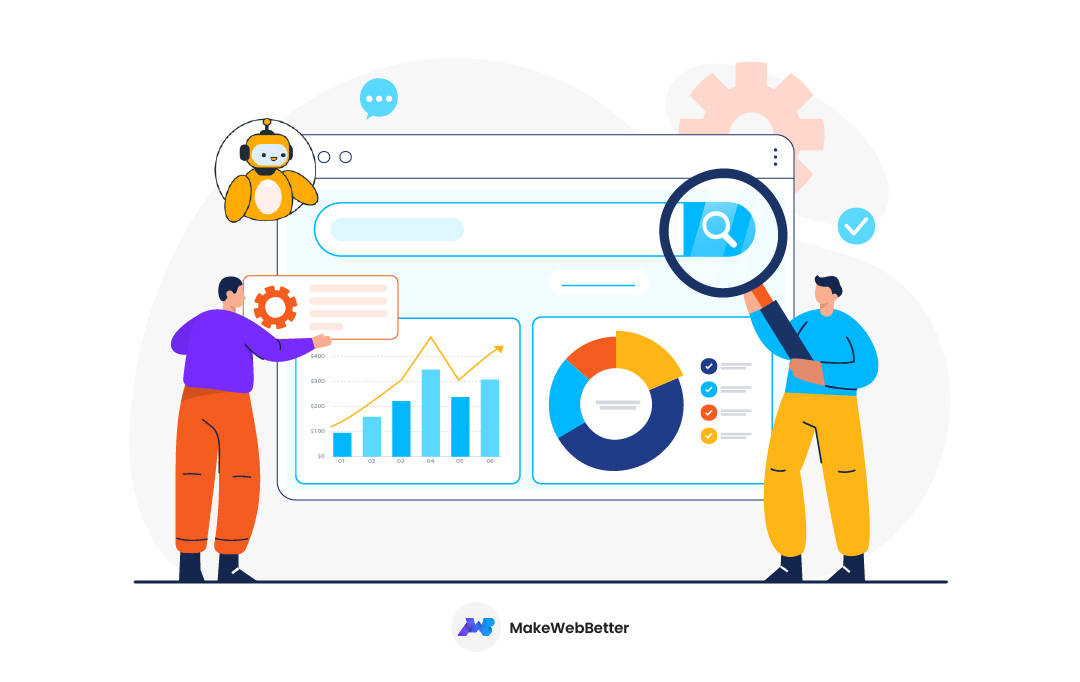In today’s competitive eCommerce landscape, reaching your target audience wherever they shop is crucial for success.
Gone are the days of relying solely on your own online store. This is where BigCommerce’s multi-channel integration shines.
This powerful feature allows you to connect your BigCommerce store to a vast network of popular sales channels, marketplaces, and social media platforms.
Imagine the possibilities!
Instantly expand your customer base, automate tedious tasks like product listing and inventory management, and create a frictionless shopping experience for customers – all from a central hub.

The result?
Increased sales, improved efficiency, and a thriving online business.
Ready to unlock the true potential of your BigCommerce store? Join me into the world of multi-channel integration and explore how it can transform your approach to eCommerce.
The Power of BigCommerce Multi-Channel Integration
Ever feel like you’re trapped on a deserted online island, with limited customer traffic?
BigCommerce multi-channel integration is your rescue boat, ferrying you to a bustling marketplace filled with potential customers.
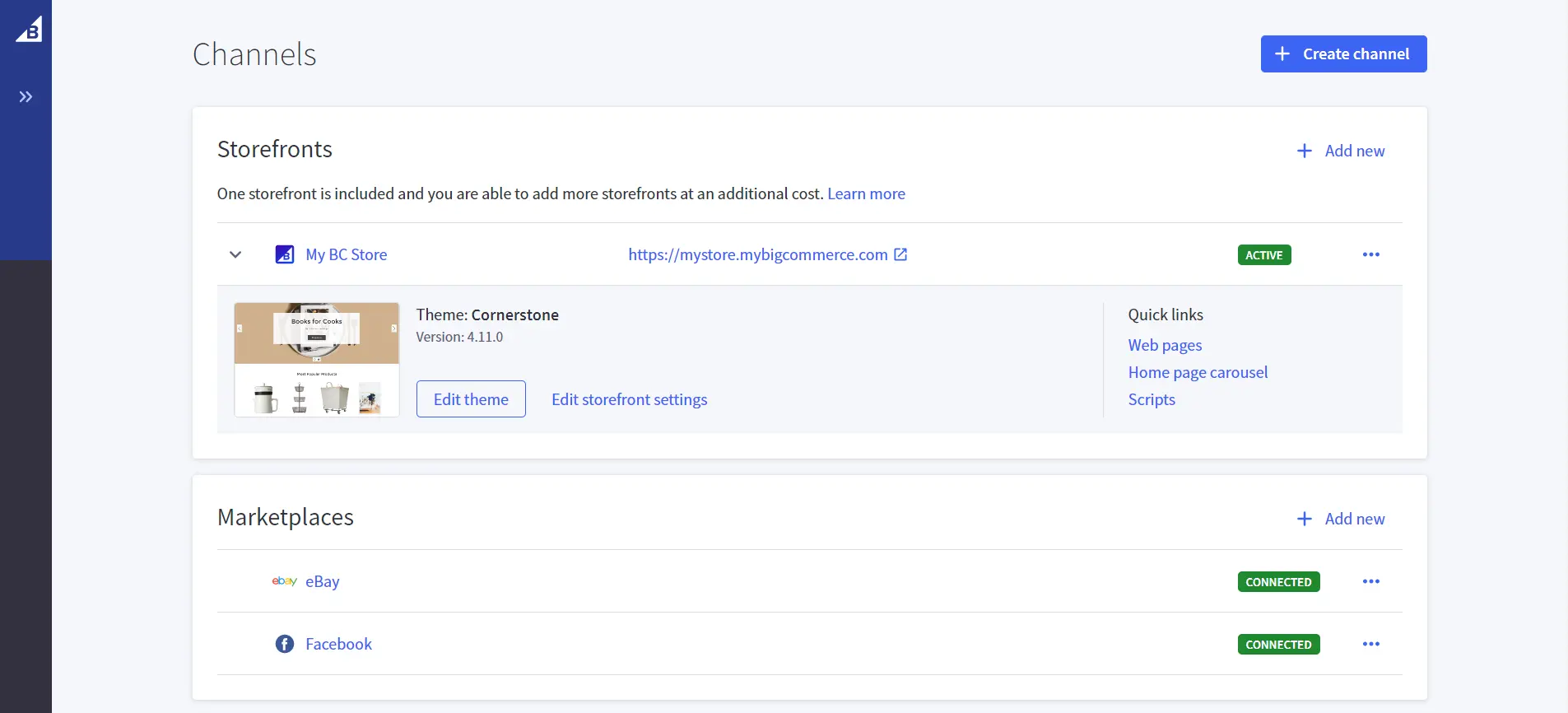
Here’s how it works:
What is BigCommerce multi-channel integration?
Imagine your BigCommerce store as a bustling marketplace, but limited by its physical walls.
BigCommerce multi-channel integration acts as a gateway, unlocking a universe of potential customers across various online platforms.
Here’s how it works:
-
Connecting to Established Marketplaces
Think of giants like Amazon, eBay, and Walmart – massive online marketplaces teeming with millions of active buyers.
Multi-channel integration allows you to seamlessly list your products on these platforms, instantly reaching a wider audience who are already actively searching for products like yours.
However, keep in mind that these marketplaces often require individual product listings and management, along with commission fees on each sale.
-
Leveraging the Power of Social Commerce
Social media isn’t just about connecting with friends anymore.
Platforms like Facebook Shops and Instagram Shopping have transformed into powerful sales tools. BigCommerce integration allows you to leverage your existing social media presence to showcase products directly to your engaged followers.
This fosters a sense of community and allows for targeted advertising based on demographics and interests, potentially reaching highly relevant customers who are already familiar with your brand.
-
Creating a Seamless Omnichannel Experience
Do you also have a brick-and-mortar store?
BigCommerce integration with Point-of-Sale (POS) systems allows you to bridge the gap between online and offline sales.
Imagine managing both your online store inventory and your in-store stock levels from a single system. This eliminates overselling issues and ensures accurate stock counts, no matter where a customer chooses to purchase.
Additionally, POS integration can provide valuable customer data across all channels, allowing you to personalize your marketing efforts and create a truly omnichannel experience for your customers.
By strategically connecting your BigCommerce store with these diverse sales channels, you can dramatically expand your reach, tap into new customer segments, and unlock the true potential of your online business.
In other words, it’s a powerful tool that allows you to go beyond the walls of your own website and establish a strong presence wherever your ideal customers choose to shop.
Benefits of BigCommerce Multi-Channel Integration
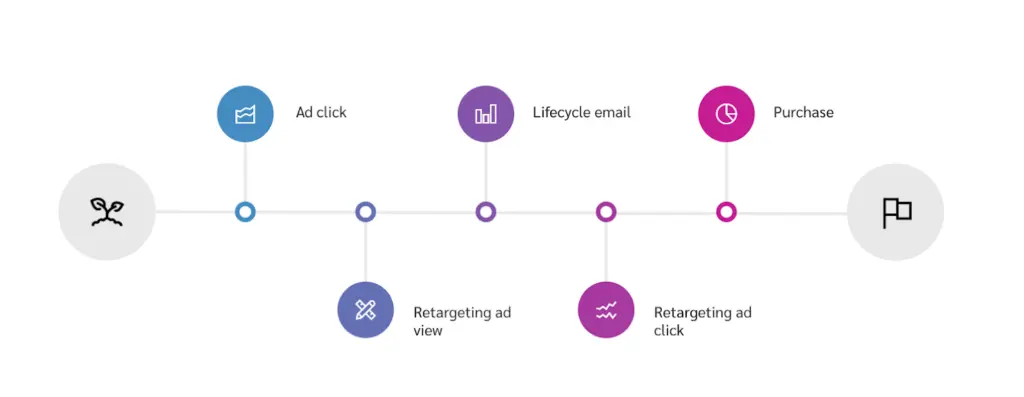
Increased Efficiency
Conduct your online sales like a well-oiled machine.
Manage everything from product listings to inventory and fulfillment through a single hub.
So, no more juggling multiple platforms or wasting time with repetitive tasks. This frees you to focus on what matters – crafting amazing products and engaging with your customers.
Improved Accuracy
Eliminate the dreaded “out-of-stock” experience for your customers.
Real-time inventory sync ensures your stock levels are always up-to-date across all channels, from your website to marketplaces and social media platforms.
This keeps your customers happy and eliminates the frustration of unexpected stock issues.
Enhanced Customer Experience
Imagine a seamless shopping experience, regardless of where a customer discovers your brand.
BigCommerce multi-channel integration ensures consistent product information, pricing, and brand messaging across all your sales channels.
In other words, this creates a sense of trust and familiarity, guiding them smoothly through the buying journey.
Scalability
As your business grows, your sales channels can too!
Moreover, easily add new marketplaces, social commerce platforms, or even brick-and-mortar POS systems – all within the familiar BigCommerce environment.
This allows you to effortlessly reach a wider audience and scale your business without limitations.
Popular Sales Channels for BigCommerce Integration
As explained earlier, BigCommerce multi-channel integration unlocks a universe of potential customers by connecting your store to various sales channels.
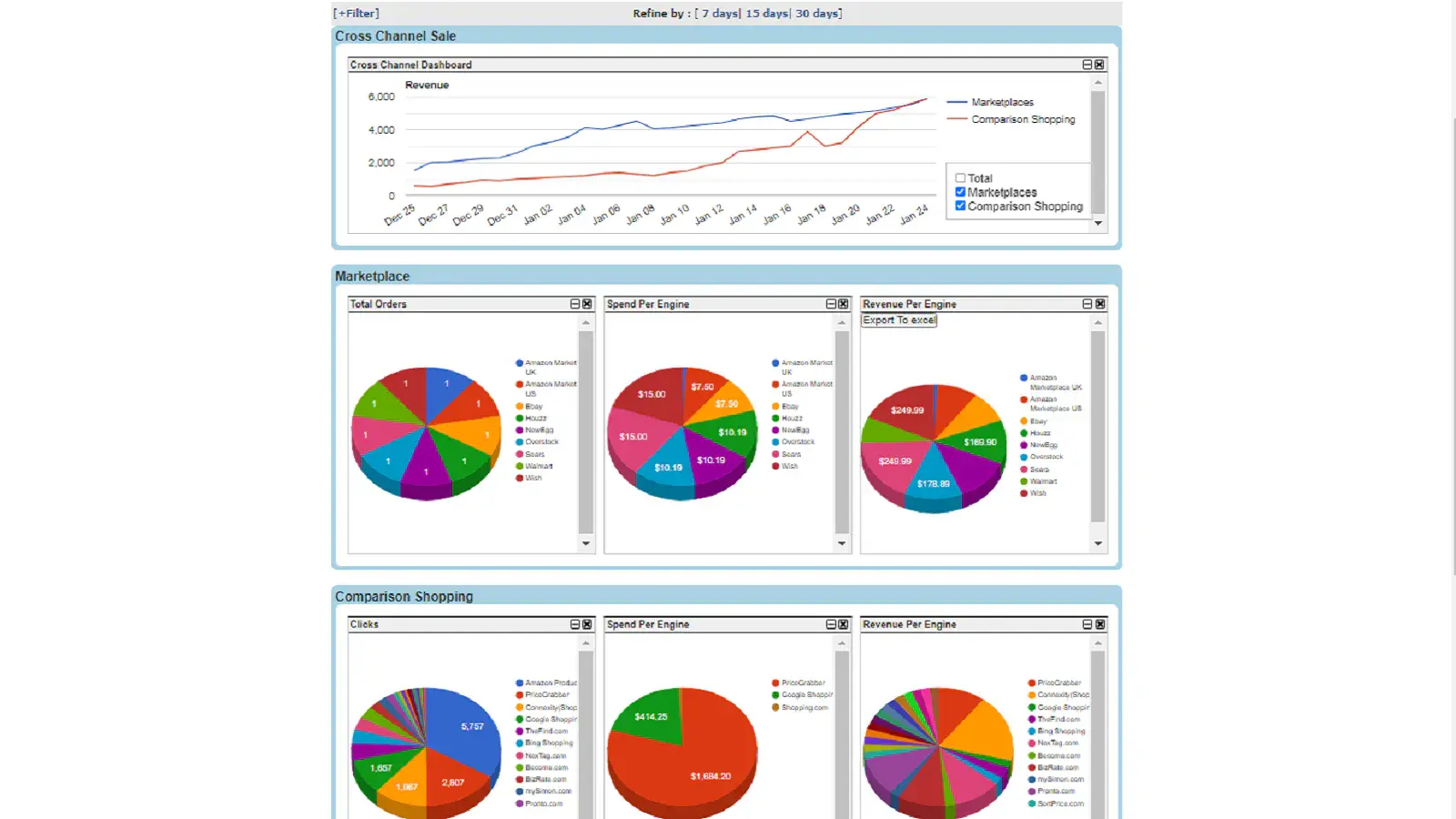
Here’s a breakdown of some popular options:
1. Marketplaces (e.g., Amazon, eBay, Walmart)
- Pros:
- Massive Customer Base: Reach millions of potential buyers already actively searching for products on these established platforms.
- Brand Recognition: Benefit from the marketplace’s reputation and trust, potentially boosting your brand awareness.
- Increased Sales Potential: Tap into a ready-made audience actively looking to buy.
- Cons:
- Commission Fees: Expect to pay a percentage of your sales to the marketplace as a commission fee.
- Competition: Stand out from the crowd – high-quality product listings, competitive pricing, and excellent customer service are crucial.
2. Social Commerce Platforms (e.g., Facebook Shops, Instagram Shopping)
- Pros:
- Leverage Social Media Engagement: Sell directly to your existing social media followers who are already familiar with your brand.
- Targeted Audiences: Utilize social media advertising tools to reach highly targeted audiences based on demographics and interests.
- Visual Appeal: Showcase your products in a visually appealing format that resonates with social media users.
- Cons:
- Limited Customization: Social commerce platforms may have limitations on how you can customize your product listings and shopping experience.
- Focus on Engagement: Building a strong social media presence and fostering engagement is essential for success.
3. Point-of-Sale Systems (POS)
- Pros:
- Omnichannel Experience: Offer a seamless shopping experience for customers who might start browsing online and complete their purchase in-store (or vice versa).
- Unified Inventory Management: Manage both online and in-store inventory from a single system, eliminating overselling and ensuring accurate stock levels.
- Enhanced Customer Service: Access customer data across all channels for a more personalized experience.
- Cons:
- Hardware Investment: Depending on your needs, you may need to invest in additional hardware (e.g., barcode scanners) to integrate POS systems. If you’re evaluating your options, G2 has a helpful guide on POS System costs that breaks down pricing factors and features across top solutions.
- Learning Curve: Understanding the POS system and its integration with BigCommerce might require some training for your team.
Choosing the right sales channels depends on your specific business goals and target audience.
That is to say, BigCommerce offers a rich selection of integrations to help you reach your ideal customers wherever they shop.
Getting Started with BigCommerce Multi-Channel Integration
BigCommerce multi-channel integration opens doors to a wider audience, but navigating the initial setup can feel daunting.
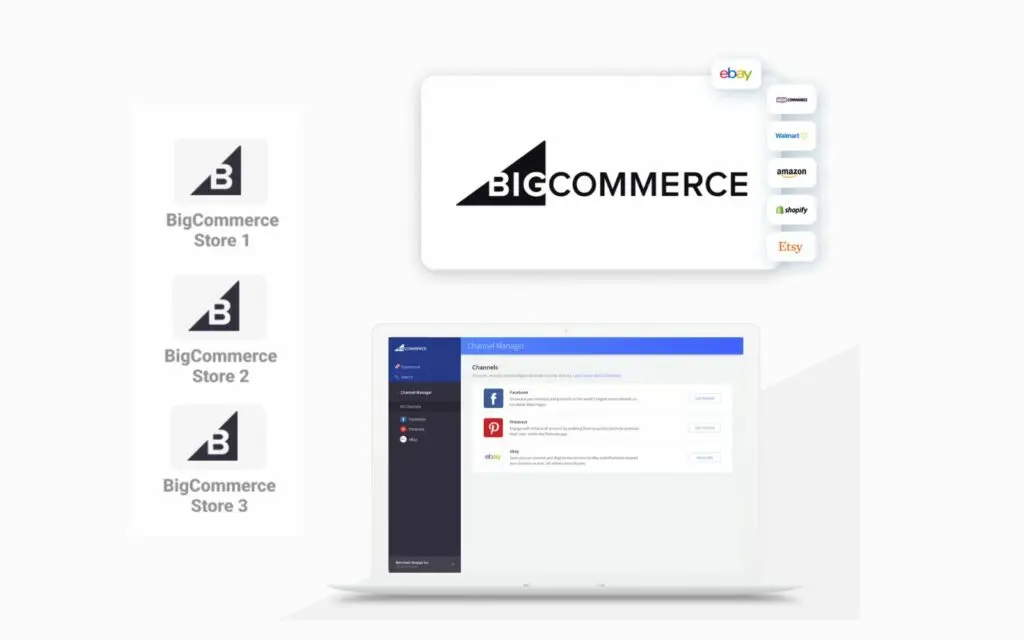
Here’s a breakdown to get you started:
1. Identify Your Target Sales Channels
- Know your audience: Who are you trying to reach? Understanding your ideal customer’s shopping habits is crucial. Do they frequent Amazon for everyday items, or browse Facebook Shops for trending fashion finds?
- Product type matters: Consider which sales channels best suit your products. Bulky furniture might not be ideal for social commerce platforms, while digital downloads thrive there.
2. Explore Integration Options
- BigCommerce’s Built-In Integrations: BigCommerce offers native integrations with several popular marketplaces and social commerce platforms. These options are generally user-friendly and require minimal setup.
- Third-Party App Marketplaces: The BigCommerce app marketplace offers a vast selection of third-party apps for connecting to various sales channels, POS systems, and more. These apps often provide additional features and functionalities beyond native integrations.
3. Choose the Right Integration Solution
- Cost: Consider the financial implications. Native integrations are often free, while third-party apps may have monthly fees or transaction-based pricing.
- Ease of Use: Evaluate how user-friendly the integration is. Will it require technical expertise or can your team manage it smoothly?
- Feature Set: Match the features offered by the integration solution to your specific needs. Do you require advanced inventory management or targeted advertising capabilities?
4. Considering a Powerful Marketing Automation Solution
While expanding your sales channels is crucial, managing customer data and marketing efforts across multiple platforms can become complex.
Furthermore, consider integrating your BigCommerce store with a robust Customer Relationship Management (CRM) system like HubSpot.
MakeWebBetter’s HubSpot BigCommerce Integration seamlessly connects your store with HubSpot, creating a powerful marketing automation hub.
Here’s a glimpse into the benefits:
- Sync Customer Data: Unify your customer information across channels, gaining valuable insights into buying behavior and preferences.
- Automated Marketing Campaigns: Trigger targeted email based on customer actions and purchase history.
- Streamlined Workflow: Automate repetitive tasks like sending abandoned cart reminders or follow-up emails, saving you time and resources.
- Enhanced Customer Experience: Personalize your marketing efforts across channels, fostering stronger customer relationships.
Steps to Integrate BigCommerce with HubSpot (using MakeWebBetter’s integration)
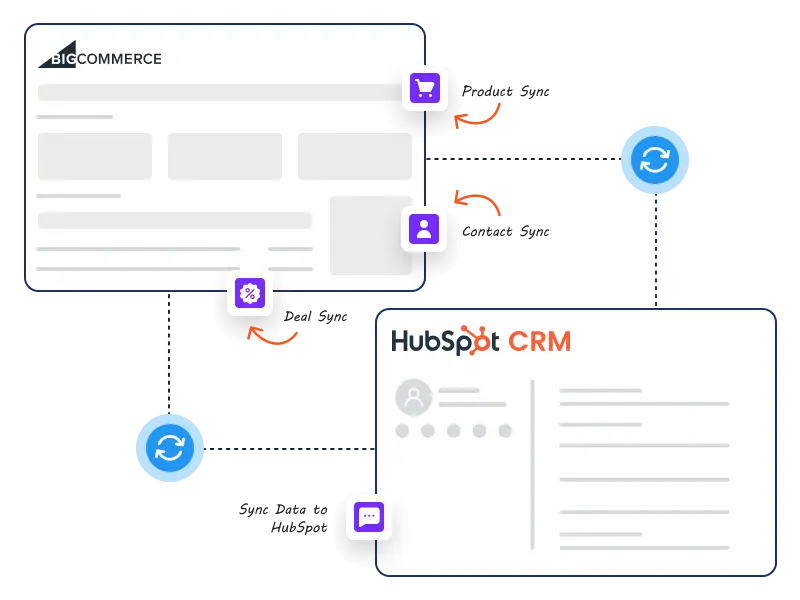
- Install the App: Head over to the BigCommerce app marketplace and search for “MakeWebBetter HubSpot BigCommerce Integration.” Install and activate the app.
- Connect Your Accounts: Link your BigCommerce store and HubSpot CRM within the app interface.
- Map Your Data: Define how customer data, products, and orders will be synced between the two platforms.
- Customize Workflows: Set up automated workflows based on your marketing strategy and customer behavior.
- Analyze & Optimize: Utilize HubSpot’s analytics tools to track campaign performance and refine your marketing efforts for even greater success.
Also remember, MakeWebBetter offers detailed documentation and support to guide you through the integration process.
So, by combining BigCommerce multi-channel integration with a robust CRM like HubSpot, you’ll unlock a powerful combination for reaching new customers, nurturing leads, and ultimately growing your online business.
That Is To Say, Here’s How to Connect Your BigCommerce Store to HubSpot CRM Under 5 Minutes
Pro Tips for Successful Multi-Channel Selling
Now that you’ve unlocked the power of BigCommerce multi-channel integration, let’s dive into some essential tips to ensure your success across all sales channels:
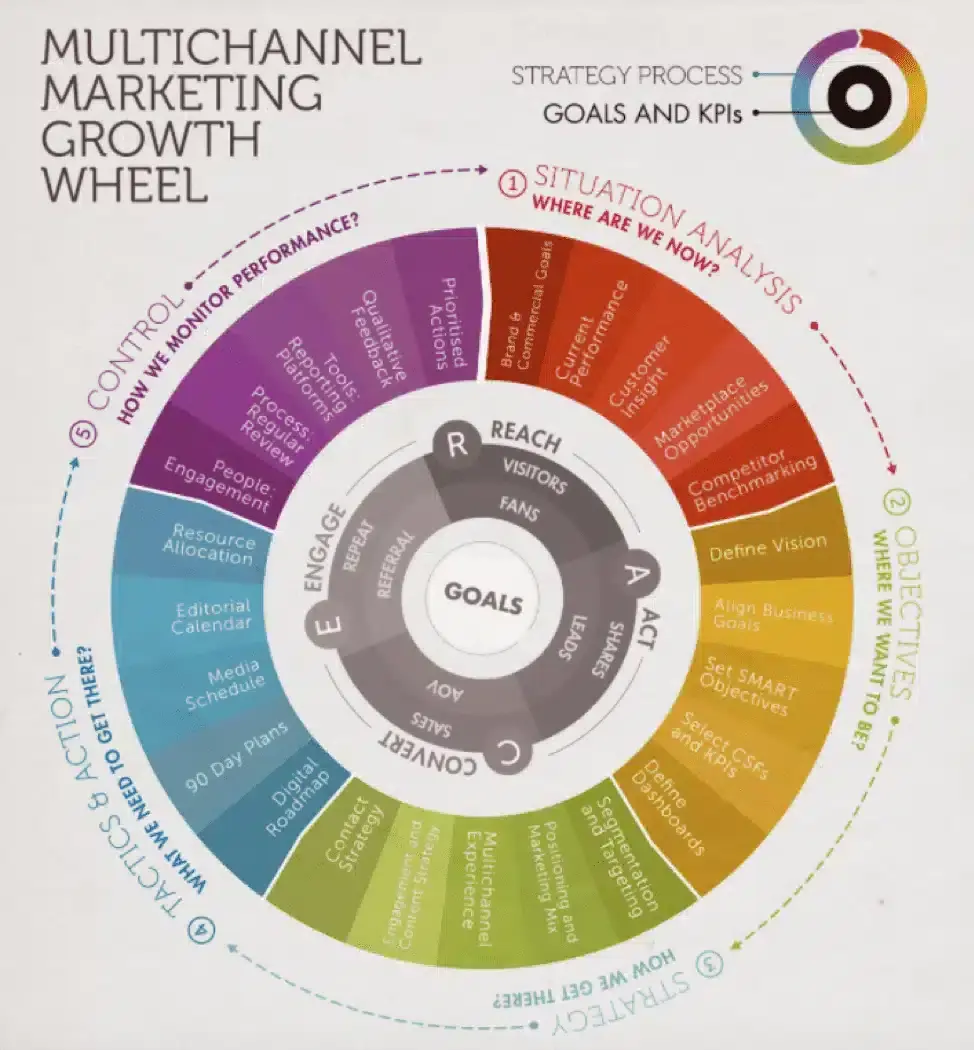
1. Brand Consistency is Key
- Maintain a unified brand voice and messaging across all platforms. Your customers should recognize your brand identity, whether they encounter it on Facebook Shops or your own website.
- Ensure consistent product information throughout your listings. This includes accurate descriptions, high-quality images, and clear pricing.
2. Optimize for Each Platform
- Tailor your product listings to the specific requirements of each sales channel. For example, capitalize on relevant keywords for marketplaces like Amazon, while emphasizing visual appeal for social commerce platforms like Instagram Shopping.
- Leverage the unique features of each channel. Moreover, utilize hashtags on social media, or run targeted ad campaigns to reach specific demographics on marketplaces.
3. Competitive Pricing & Promotions
- Maintain competitive pricing across all channels. Price wars are rarely sustainable, but ensure you’re offering fair and attractive prices to customers wherever they shop.
- Run strategic promotions and discounts across all channels to generate excitement and encourage purchases. Also consider offering bundle deals or flash sales to incentivize customers.
4. Data-Driven Decisions
- Track and analyze sales data from each channel. Use this data to identify your best-performing channels, popular products, and customer preferences.
- Continually optimize your approach based on your data insights. So, refine product listings, adjust pricing strategies, and focus your marketing efforts on high-performing channels.
5. Stellar Customer Service
- Provide excellent customer service across all touchpoints, whether it’s through live chat on your website, social media messaging, or customer support inquiries on marketplaces.
- Respond promptly to customer questions and concerns. A positive customer experience fosters brand loyalty and encourages repeat business.
Remember, mastering multi-channel selling is an ongoing journey.
By following these pro tips and leveraging the power of BigCommerce multi-channel integration, you can create a seamless and successful omnichannel experience for your customers, ultimately leading to a thriving online business.
Final Thoughts
BigCommerce multi-channel integration isn’t just about selling more; it’s about creating a vibrant online marketplace for your brand.
So, imagine connecting with customers on their preferred platforms, offering a seamless experience that feels as welcoming as your own storefront.
In other words, by leveraging BigCommerce’s powerful integration features, you can unlock a world of possibilities: reaching new audiences, streamlining workflows, and ultimately, nurturing a thriving online community around your products.
Think of it as extending a warm invitation to your ideal customers, wherever they may be.
That is to say, with a little planning and the right multi-channel approach, you can create a symphony of sales success.
So, take a deep breath, embrace the possibilities, and watch your BigCommerce store blossom into a thriving multi-channel hub!
Ready to unleash the full power of BigCommerce multi-channel integration?
MakeWebBetter can be your trusted guide.
Our team of experts can help you navigate the integration process, configure your chosen sales channels, and ensure a smooth and successful multi-channel experience.
Contact MakeWebBetter today and watch your BigCommerce store blossom into a thriving online marketplace!
Want to Improve Your BigCommerce Experience?
Schedule a quick call with MakeWebBetter today!



